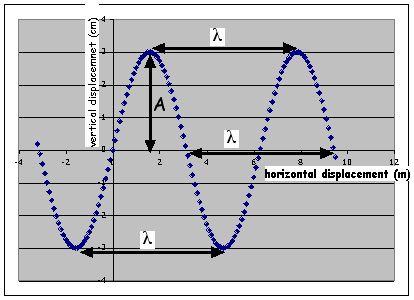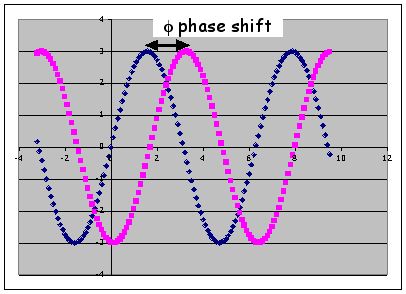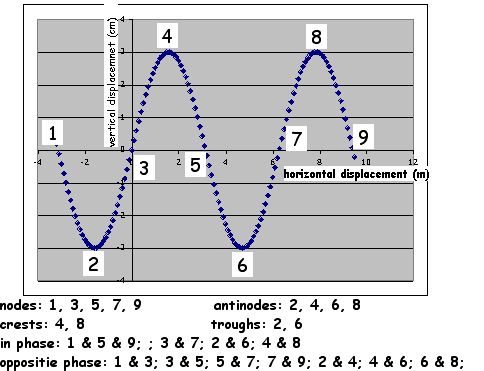



Universal Wave Equation
v = Δx/Δt = λ/T
= fλ
for electromagnetic waves c = fλ
where c = 3.00x108m/s
Every point on a wave front acts as the source of the ongoing wave. One implication of this is that frequency remains constant for a wave as it propogates through a medium and even into other media.
Circular Waves
are created by point sources. As
the wave propogates outward the radius of curvature increases (the curvature
decreases because C a 1/R). As the circular
wave continues to propogate the amplitude (energy) of the wave decreases.
This is caused by absorption and because the energy that was used to create
the wave is being distributed over a larger and larger distance (the circumference
of the circular wave). This creates a smaller energy density (energy spread
along the circumference of the circle - J/m) which reduces the amplitude.
A ray is an arrow that is drawn to represent the direction of propogation of a wave. It is drawn perpendicular to the wave front.
A circular wave requires an infinity number of rays to represent the direction of propogation.
Plane waves (require 1 ray)
can be created 4 ways:
1) a line source (but remember that a line is an infinite number of colinear
points that have the same frequency, amplitude, and phase; each point
creates a circular wave; therefore a plane wave is the interference of
an infinite number of colinear, in phase circular waves)
2) Remember that a plane wave has zero curvature, therefore its radius of curvature is infinity. So simply go any inifinite distance from a point source.
3) Reflection of a circular wave (created bya point source) that originates at the focus of a concave (converging) reflector.
4) Refraction of a circular wave (created bya point source) that originates at the focus of a double-convex (converging) refractor (lens)